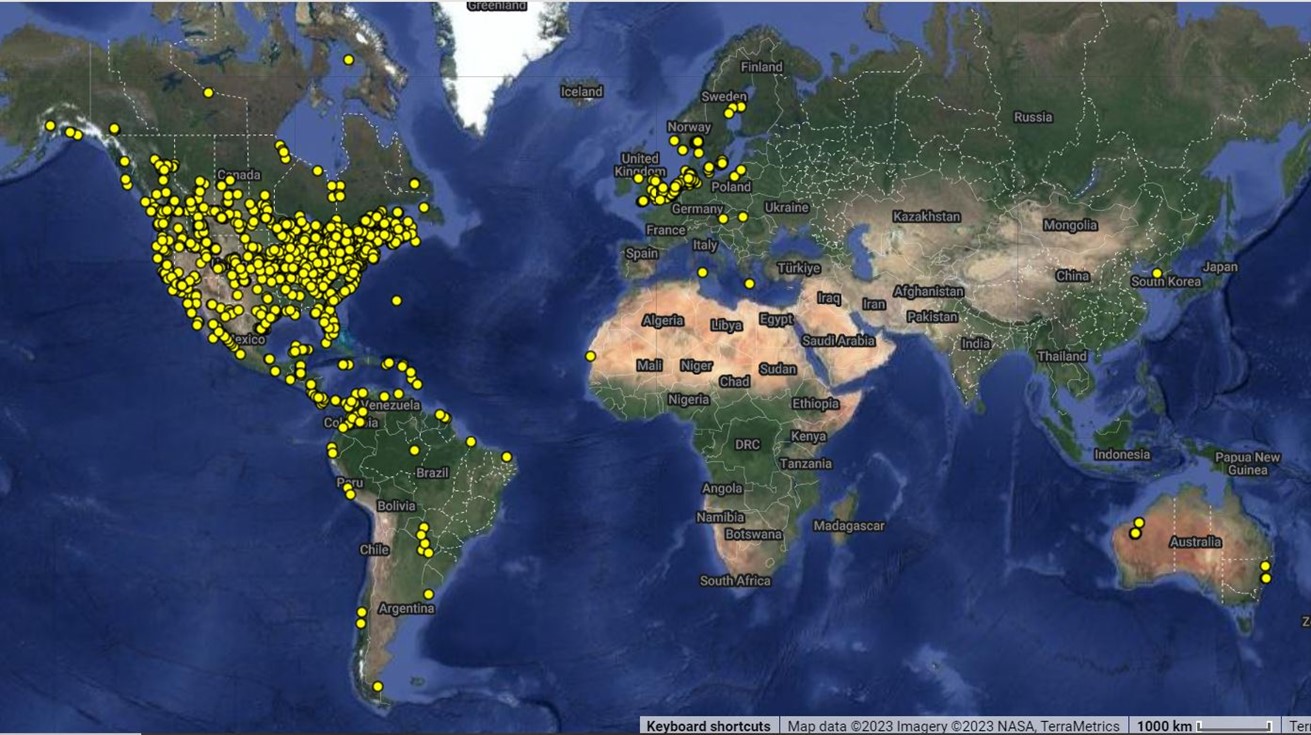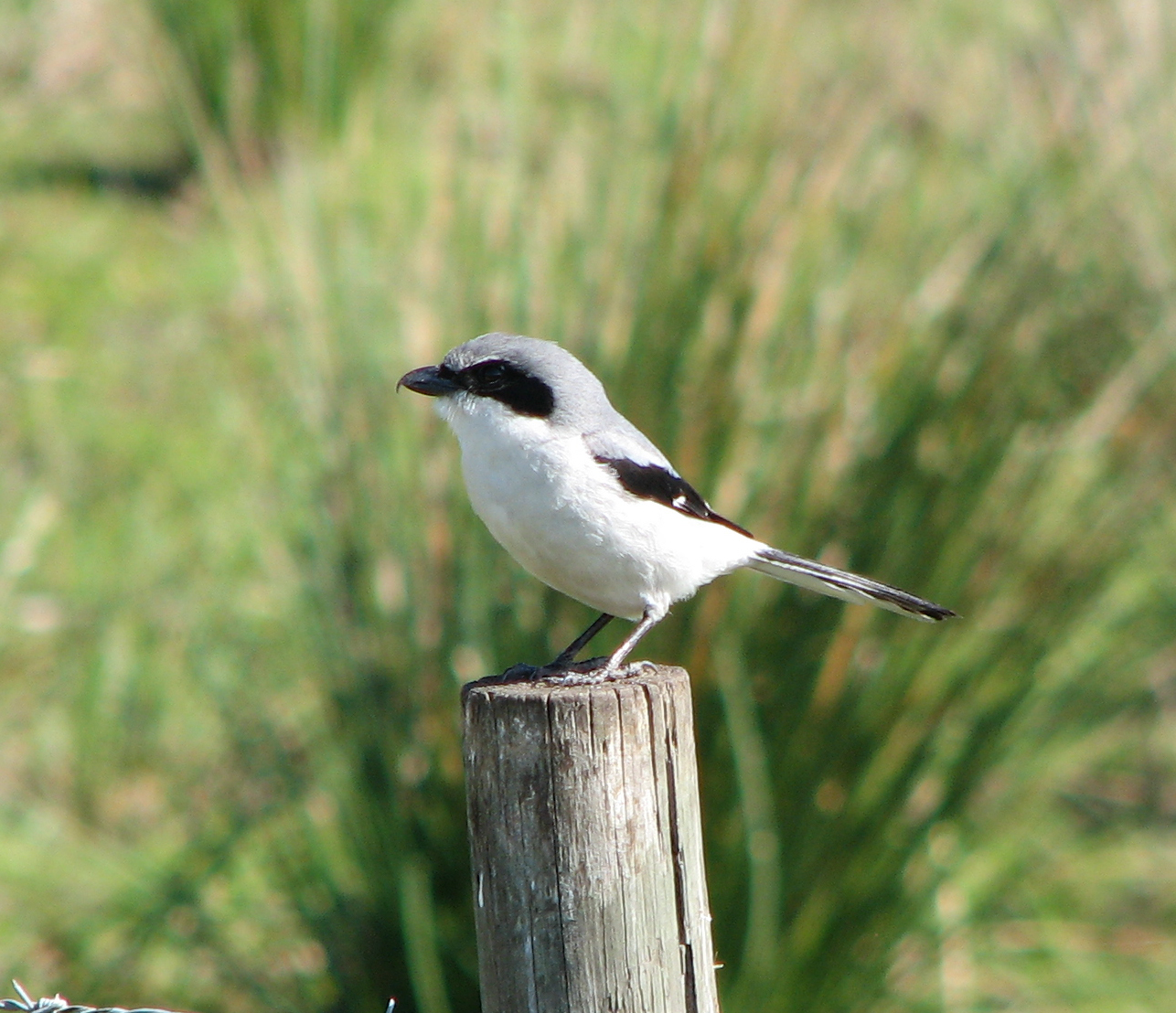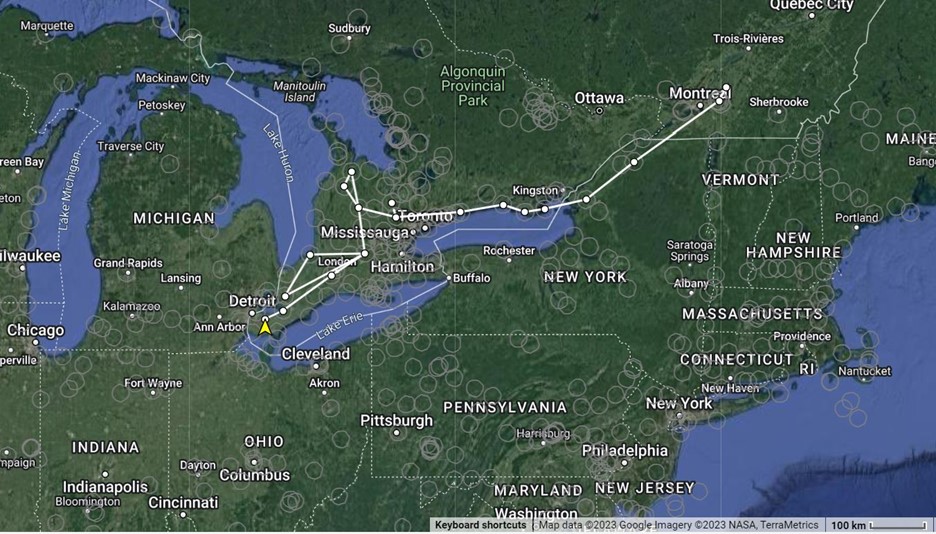Today’s post comes from Bronte Creek Provincial Park Discovery Ranger Hannah Stockford and Darlington Provincial Park Piping Plover Student Jax Nasimok.
Once upon a time, bird migration was a great mystery!
Early ideas about migration by philosophers and scientists from hundreds of years ago were quite unusual. They varied from thinking birds hibernated in the mud at the bottom of lakes to flying to the moon!
Now we know most birds that migrate do so to find food, or travel to seasonal habitat or reproductive grounds.
While our understanding of migration is limited, with new technologies like Motus, humans are on the right track expand our knowledge in order to better understand and conserve migratory wildlife.
What is Motus?
The Motus Wildlife Tracking System (or Motus for short) is a collaborative research network that uses automated radio telemetry to track the movement and migration of birds, bats, and insects for conservation.
Motus is a program of Birds Canada in partnership with many researchers and organizations.
This system works on three main components:
1. Tag, you’re it!

The first is the Motus tag. A researcher will safely attach a small, nearly weightless solar- or battery-powered tag to their study species.
These small tags emit a signal that’s unique to the individual animal wearing it, which is detected by nearby Motus stations.
Did you know that Motus tags have been deployed on more than 300 species?
And more than 40,000 individuals have been tagged so far!
2. Loud and clear!
The second component is the stations.
Motus stations are placed at strategic locations around the world to listen for signals given off by the various tags.
As a bird flies hundreds of kilometres and passes different Motus stations along their migration route, each station will pick up on the signal from the tag, and we can track the bird’s exact route as it flies!
In addition to tracking migration, Motus allow researchers to follow any kind of movement, including daily activity, more localized behaviours, and even measure their survival.
For example, if an individual is spending a long time in one area, it could be breeding there and raising a family! Researchers can also learn about post-breeding dispersal and all sorts of cool reasons they move around.
3. Working together
The third is collaboration. Motus is successful because it brings together researchers, conservationists, and practitioners from around the world.
There are more than 1,800 partners and collaborators that work with Motus by deploying tags, installing receiving stations, or using the data to advance science and conservation of species
This collaboration is essential as receiving stations can be expensive to install and maintain. Without a network of multiple stations across countries, we would never be able to gather the accurate and extensive data that is possible today!

Ontario Parks is part of the migration-tracking team!
While there are many Motus receiving towers around the world, you may have walked past one at any of these parks without realizing its significance to migration research. Many other stations are in close proximity to parks, or go on or offline with various projects.
- Bronte Creek Provincial Park
- Grundy Lake Provincial Park
- Killbear Provincial Park
- Pinery Provincial Park
- Point Farms Provincial Park
- Rondeau Provincial Park
- Sandbanks Provincial Park
- Sleeping Giant Provincial Park
- St. Williams Conservation Reserve
- Torrance Barrens Conservation Reserve
Past participants:
What we’ve learned in parks
Motus detections within Ontario Parks allows us to learn more about the migratory patterns of Canadian birds! Here are a few exciting records…
On August 14, 2021, a migrant Loggerhead Shrike was recorded at Sandbanks Provincial Park.

This shrike was part of a captive breeding program aimed at helping their recovery as Loggerhead Shrikes are an endangered species in Ontario, with their provincial strongholds in Carden Alvar and Napanee.
Where was this one from, or where was it going? With Motus, maybe we’ll find out one day!
On March 17, 2023, a Snow Bunting was recorded at Pinery Provincial Park.

Less than a month later on April 7, the same Snow Bunting was recorded at Sandbanks!

Between these two points, this bunting flew north almost to Owen Sound before flying southeast and following the shoreline of Lake Ontario through Sandbanks.
Afterwards, it continued northeast to just outside Montreal! You can watch its flight path here on Motus’ website.
At Darlington, multiple Bank Swallows that were tagged in Newcastle and Courtice visited the park throughout June and July in 2015.

With extensive bluffs along this section of Lake Ontario shoreline, they were likely breeding nearby! This is important data given the Bank Swallow is listed as threatened in Ontario.
At Torrence Barrens Conservation Reserve, we looked at one of the Common Nighthawks that had been picked up by the park’s MOTUS tower on May 16, 2020.

We couldn’t believe the journey it had been on! Find its flight path here on Motus’ website.
Migration is magnificent!
While we don’t know everything about migration, it is our curiosity that will continue our quest to unravel its mysteries.
The next time you see a bird in flight, think about all the places it has been, all the places it may go, and all there is to learn about these marvelous creatures!

Want to learn more about spotting migrating friends in Ontario? Check out these resources:



